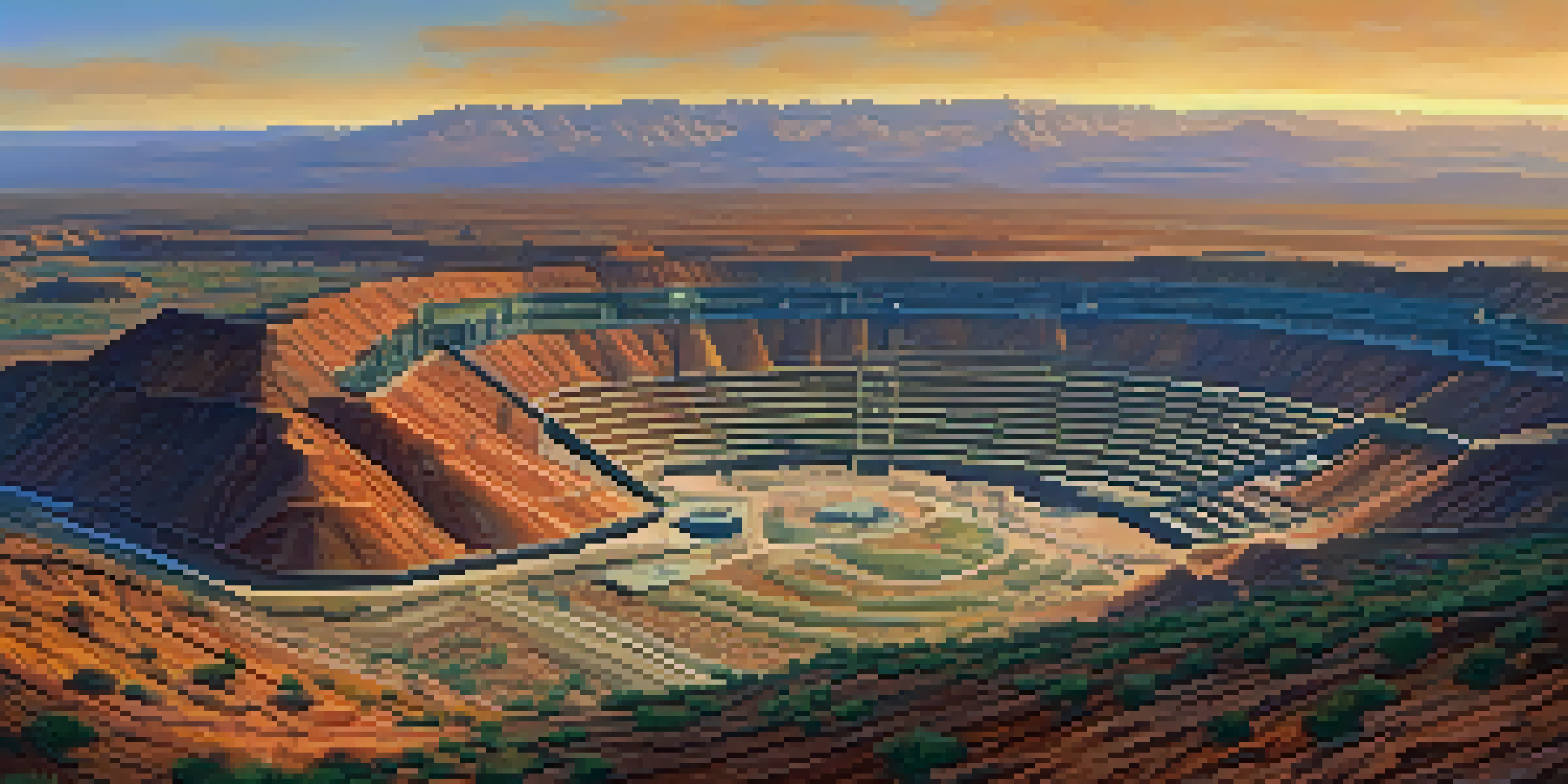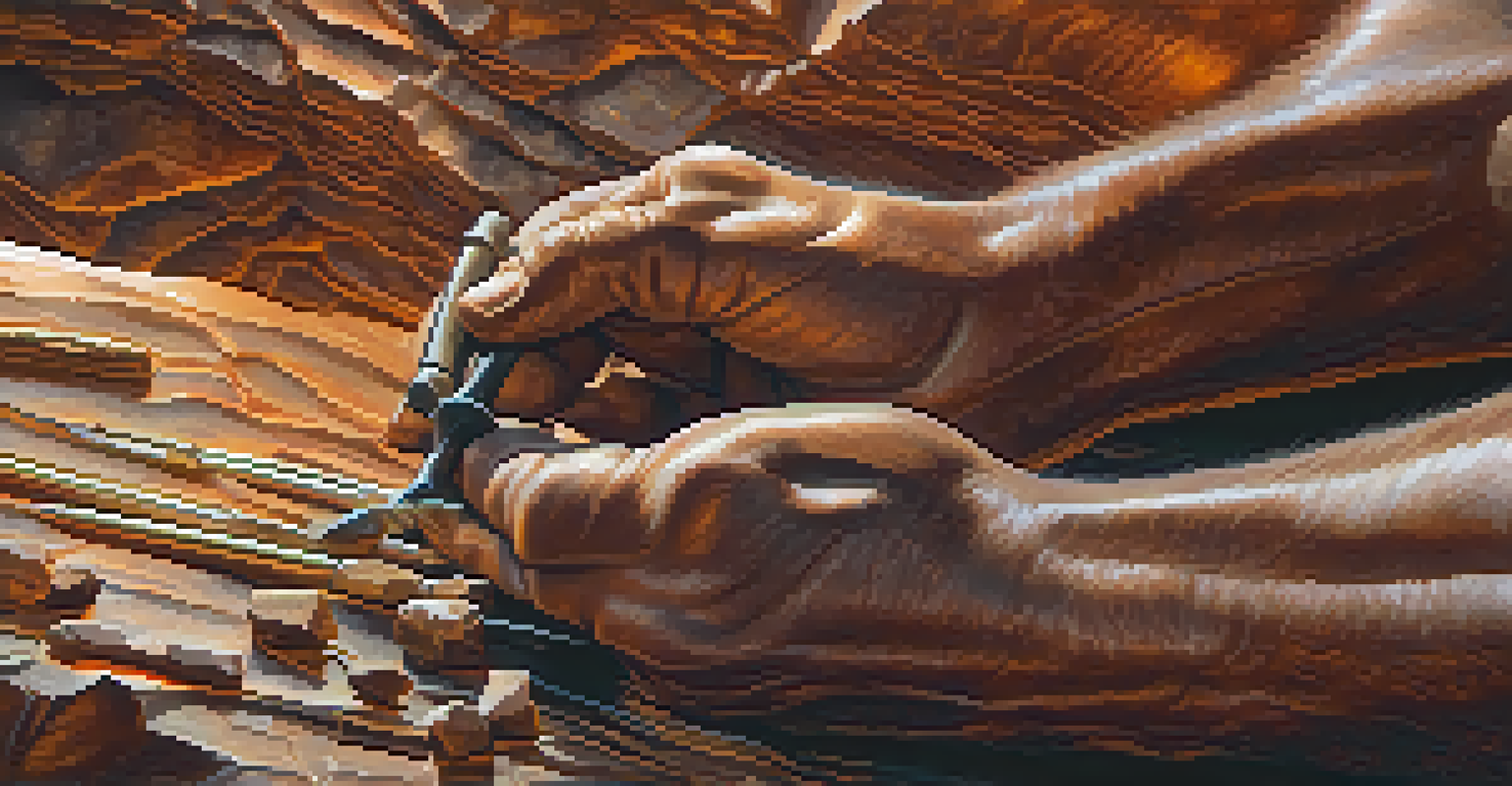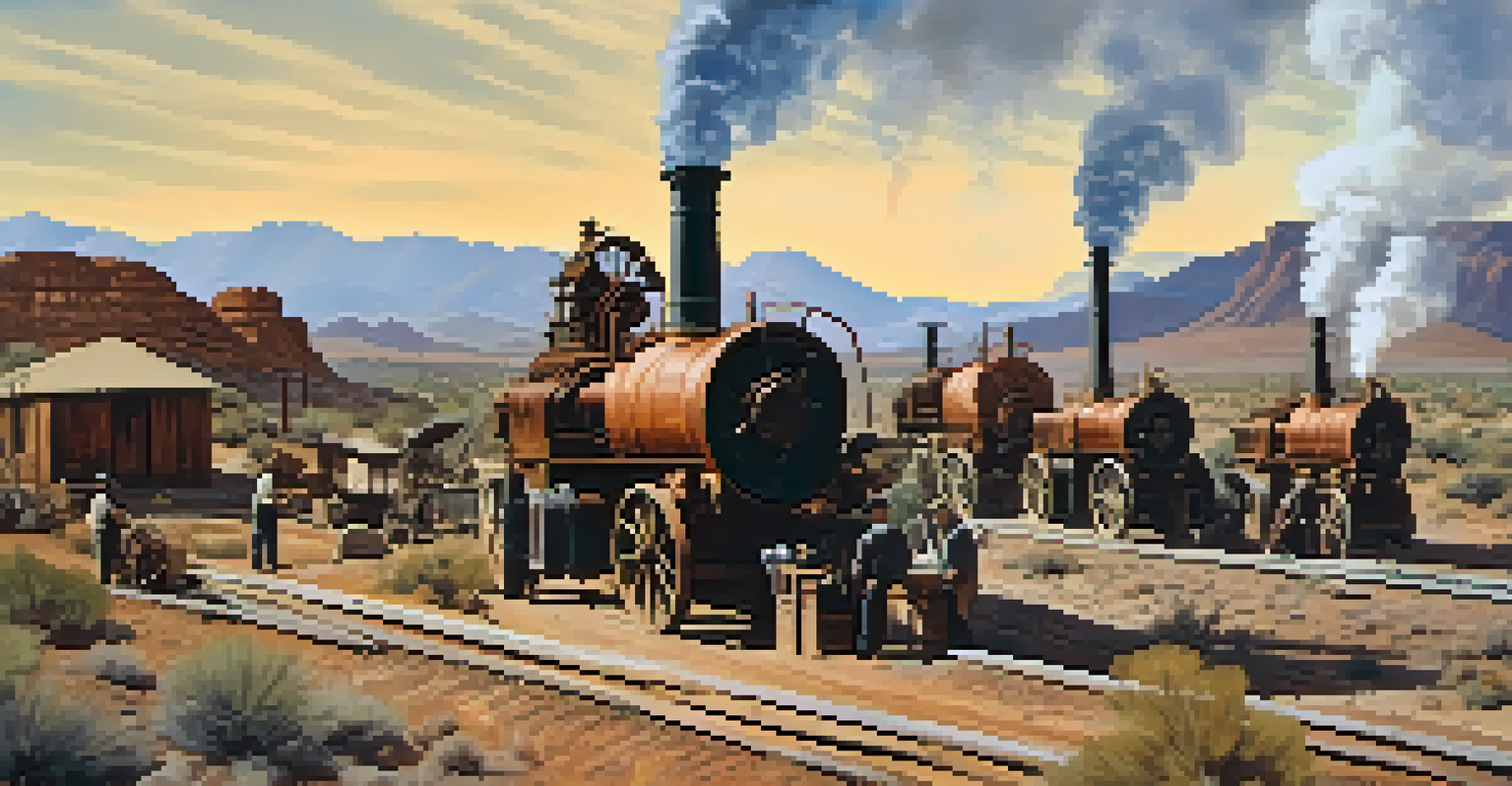History of Copper Mining in Arizona: A Comprehensive Overview

The Origins of Copper Mining in Arizona
Copper mining in Arizona dates back thousands of years, with the earliest known extraction occurring around 300 AD by Indigenous peoples. These early miners utilized simple tools to extract copper from surface deposits, which they fashioned into tools and ornaments. The use of copper in this region highlights the material's importance in early technology and culture, setting the stage for future mining endeavors.
The mining industry is a vital part of Arizona's economy, but we must also ensure that we protect our environment for future generations.
As European settlers arrived in the 19th century, they recognized the area's vast mineral wealth. The California Gold Rush in 1849 sparked interest in the American West, leading to a rush of prospectors and miners to Arizona. This influx brought advanced mining techniques that would forever change the landscape of copper extraction in the state.
By the late 1800s, copper was becoming a vital resource for the expanding nation, especially with the rise of electrical technologies. As demand surged, mining operations grew more sophisticated, paving the way for Arizona to become a leading copper producer in the United States.
The Rise of Major Copper Mining Companies
The late 19th and early 20th centuries marked the emergence of major copper mining companies in Arizona. Notable firms like Phelps Dodge and Arizona Copper Company played crucial roles in developing large-scale mining operations. These companies not only extracted copper but also established essential infrastructure, including railroads and smelters, that would support the industry’s growth.

With advancements in extraction technology, particularly the introduction of mechanized mining, productivity soared. This shift allowed companies to access deeper deposits, which were previously unfeasible to mine. As a result, Arizona's copper output began to climb, positioning the state as a critical player in the global copper market.
Copper Mining's Rich History
Arizona's copper mining dates back to 300 AD and has evolved significantly with advancements in technology and demand.
The economic impact was significant, as these companies created thousands of jobs and spurred growth in nearby towns. The mining boom transformed Arizona's economy, attracting workers and families seeking a better life amidst the promise of riches.
Challenges Faced by the Copper Mining Industry
Despite its success, the copper mining industry in Arizona faced numerous challenges. Environmental concerns began to surface in the mid-20th century, as communities raised alarms about pollution and land degradation caused by mining activities. This led to increasing scrutiny and regulations aimed at protecting the environment while balancing economic interests.
Copper is the foundation of modern technology, and its extraction must balance economic benefits with environmental sustainability.
Labor disputes were another significant challenge. Workers, often enduring harsh conditions for low wages, began to organize for better rights and pay. Strikes and protests became common, highlighting the need for fair labor practices and leading to changes that improved workers' conditions in many mines.
Additionally, fluctuating copper prices on the global market created economic uncertainty. When prices dropped, many operations faced closures, leading to job losses and economic downturns in mining-dependent communities. This cycle of boom and bust highlighted the industry's vulnerability and the need for diversification.
Technological Advancements in Copper Mining
The copper mining industry in Arizona has always been at the forefront of technological innovation. In the late 20th century, advancements such as open-pit mining and hydrometallurgical processes revolutionized the way copper was extracted. These technologies made mining more efficient and reduced the environmental impact compared to traditional methods.
Automation and robotics also began to play a role in modern mining operations. Companies started implementing automated drilling and hauling systems, which improved safety and productivity. This shift not only enhanced operational efficiency but also allowed for more precise extraction of resources.
Economic Impact of Mining
The copper mining industry is a cornerstone of Arizona's economy, providing thousands of jobs and supporting various local businesses.
As technology continues to evolve, Arizona's copper mines are becoming more sustainable. Innovations in recycling and waste management are helping to minimize environmental footprints, ensuring that the state can continue to be a leader in copper production while protecting its natural resources.
The Impact of Copper Mining on Arizona's Economy
Copper mining has had a profound impact on Arizona's economy since its inception. Today, the mining industry accounts for a significant portion of the state’s gross domestic product, providing thousands of jobs and generating millions in revenue. This economic backbone has helped to fund public services and infrastructure development throughout the region.
Beyond direct employment, the copper mining sector supports numerous ancillary businesses, from equipment suppliers to transportation services. This interconnected economy means that the health of the mining industry directly influences the prosperity of many Arizona communities, making it a vital component of the state’s overall economic landscape.
Moreover, the state's rich copper deposits continue to attract investment and interest from global mining companies. As demand for copper grows—especially with the rise of renewable energy technologies—Arizona remains well-positioned to capitalize on its mineral wealth, ensuring its continued economic relevance.
Environmental Considerations in Copper Mining
As the copper mining industry evolved, so too did the awareness of its environmental impact. Today, mining companies are held to stricter environmental standards that aim to minimize pollution and habitat destruction. Efforts are being made to rehabilitate mining sites and restore ecosystems affected by past operations.
Innovative practices such as sustainable water management and waste recycling are becoming more common in Arizona's mines. These initiatives not only help mitigate environmental damage but also improve the overall sustainability of mining operations. By embracing these strategies, companies can balance economic goals with ecological responsibility.
Focus on Environmental Stewardship
As awareness of environmental issues grows, Arizona's copper mining companies are adopting sustainable practices to minimize ecological impact.
Public awareness and activism have also played crucial roles in shaping mining practices. Communities are increasingly advocating for transparency and accountability, pushing for mining operations that respect both human and environmental health. This shift towards responsible mining is reshaping the future of Arizona's copper industry.
The Future of Copper Mining in Arizona
Looking ahead, the future of copper mining in Arizona appears promising yet complex. As the world shifts toward renewable energy sources, the demand for copper is expected to rise significantly. Copper is a critical component in electric vehicles, solar panels, and wind turbines, positioning Arizona to be a key player in the transition to green energy.
However, this heightened demand also brings challenges. Balancing expansion with environmental stewardship will be crucial as mining companies navigate the dual pressures of growth and sustainability. Stakeholders must collaborate to develop practices that protect Arizona's unique landscapes while meeting the needs of a global market.

Ultimately, the future of copper mining in Arizona will depend on innovation, responsible management, and community engagement. By addressing these challenges head-on, the state can continue to thrive as a leader in copper production, ensuring that its rich history paves the way for a sustainable future.